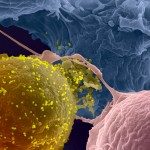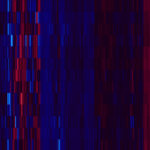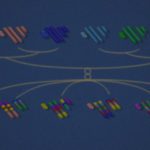Link to Pubmed [PMID] – 31296770
Link to DOI – 10.1126/science.aaw7733
Science 2019 Jul; 365(6449): 176-180
Elevated levels of type I interferon (IFN) during pregnancy are associated with intrauterine growth retardation, preterm birth, and fetal demise through mechanisms that are not well understood. A critical step of placental development is the fusion of trophoblast cells into a multinucleated syncytiotrophoblast (ST) layer. Fusion is mediated by syncytins, proteins deriving from ancestral endogenous retroviral envelopes. Using cultures of human trophoblasts or mouse cells, we show that IFN-induced transmembrane proteins (IFITMs), a family of restriction factors blocking the entry step of many viruses, impair ST formation and inhibit syncytin-mediated fusion. Moreover, the IFN inducer polyinosinic:polycytidylic acid promotes fetal resorption and placental abnormalities in wild-type but not in Ifitm-deleted mice. Thus, excessive levels of IFITMs may mediate the pregnancy complications observed during congenital infections and other IFN-induced pathologies.















